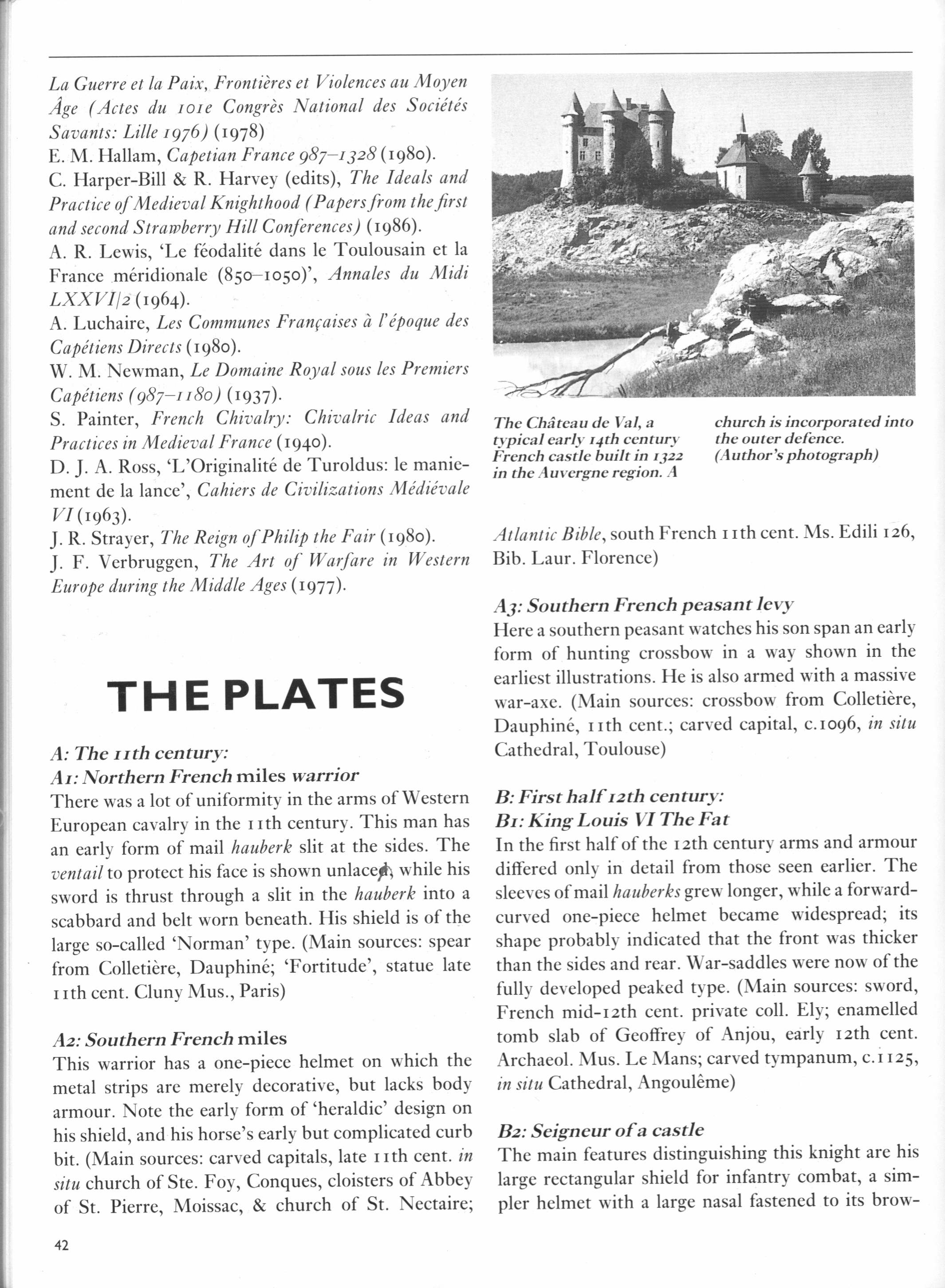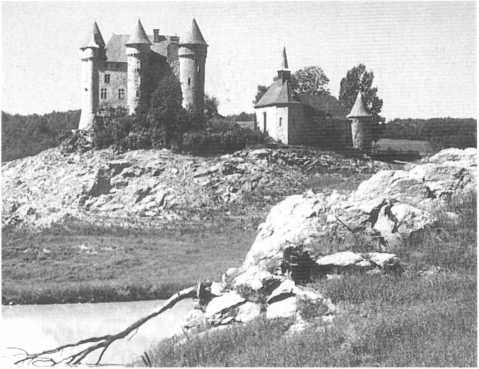m231B

La Guerre et la Paix, Frontieres et Yiolences au Moyen Age (Actes du ioie Congres National des Societes Savants: Lille 1976) (1978)
E. M. Hallam, Capetian France 987—1328 (1980).
C. Harper-Bill & R. Harvey (edits), Fhe Ideals and Practice of Medieval Knighthood (Papers front thefirst and second Strawberry Hill Conferences) (1986).
A. R. Lewis, ‘Le feodalite dans le Toulousain et la France meridionale (850—1050)’, Annales du Midi LXXVI/2 (1964).
A. Luchaire, Les Communes Franęaises d /’epoque des Capeliens Directs (1980).
W. M. Newman, Le Domaine Royal sous les Premiers Capetiens (987-1180) (1937).
S. Painter, French Chivalry: Chivalric Ideas and Practices in Medieval France (1940).
D. J. A. Ross, ‘L’Originalite de Turoldus: le manie-ment de la lance’, Cahiers de Civilizations Medierale
VI (1963).
J. R. Strayer, Fhe Reign of Philip the Fair (1980).
J. F. Verbruggen, The Art of Warfare in Western Europę during the Middle Ages (1977).
THE PLATES
A: The nth century:
Ai: Northern French miles warrior There was a lot of uniformity in the arms of Western European cavalry in the uth century. This man has an early form of mail hauberk slit at the sides. The rentail to protect his face is shown unlacejl} while his sword is thrust through a slit in the hauberk into a scabbard and belt worn beneath. His shield is of the large so-called ‘Norman’ type. (Main sources: spear from Colletiere, Dauphine; ‘Fortitude’, statuę late 1 ith cent. Cluny Mus., Paris)
A2: Southern French miles
This warrior has a one-piece helmet on which the metal strips are merely decorative, but lacks body armour. Notę the early form of ‘heraldic’ design on his shield, and his horse’s early but complicated curb bit. (Main sources: carved capitals, late nth cent. in situ church of Ste. Foy, Conąues, cloisters of Abbey of St. Pierre, Moissac, & church of St. Nectaire;

The Chateau de Val, a typical early ijth century French castle huilt in 1322 in the Auyergne region. A
church is incorporated into the outer defence.
(Author’s photograph)
Atlantic Bibie, south French 1 ith cent. Ms. Edili 126, Bib. Laur. Florence)
Aj: Southern French peasant Ievy Here a Southern peasant watches his son span an early form of hunting crossbow in a way shown in the earliest illustrations. He is also armed with a massive war-axe. (Main sources: crossbow from Colletiere, Dauphine, nth cent.; carved Capital, c.1096, in silu Cathedral, Toulouse)
B: First halFi2th century:
Bi: King Louis VI The Fat
In the first half of the i2th century arms and armour differed only in detail from those seen earlier. The sleeves of mail hauberks grew longer, while a forward-curved one-piece helmet became widespread; its shape probably indicated that the front was thicker than the sides and rear. War-saddles were now of the fully developed peaked type. (Main sources: sword, French mid-i2th cent. private coli. Ely; enamelled tomb slab of Geoffrey of Anjou, early i2th cent. Archaeol. Mus. Le Mans; carved tympanum, c.i 125, in situ Cathedral, Angouleme)
IJ2: Seigneur oFa castle
The main features distinguishing this knight are his large rectangular shield for infantry combat, a sim-pler helmet with a large nasal fastened to its brow-
42
Wyszukiwarka
Podobne podstrony:
21 COMPTES RENDUS 281 Completant le tableau de la peinture byzantine et balkaniąue au Moyen Age, cer
19 Congres International des Societes des amis de la paix,... les 26,27,28 et 30 Scptcmbrc cl l
79 un materiau aussi peu coGteux que la terre cuite au Moyen-Age. Aussi bien faut-il ici chercher a
KANTOROWICZ, EmsL Les Dęta Corps du roi. Esseri sur la thćologie polińąue au Moyen Age. Trąd. de 1 a
10 films pendant les annees 1920 et 1930, parcourant surtout les pays du Nord, terres promises des C
(4) I Les gestesGonfler Pour imiter 1 image naturelle d une fleur et utiliser au maximum les qualitś
- u — gćrants, ąuand les procćdćs illicitcs do la guerre et les iniques et hurailiantes conditions d
Que choisira la France? Que choisissez-vous? La guerre et la ruinę par la denatalite? La paix et la
— 30 La seconde. du 13 femer 1873, ćtait relatire k cc qu on dcvait entendre par la citilisation de
LESACTES DE LA CONFERENCEDE BRUXELLES CONSIDŹRES AU DOUBLE POINT DE VUE DE LA CIVILISATION DE LA GUE
C miSATION DE LA GUERRE OBSERVATIONS SUR LES LOIS DE LA GUERRE ET l’aRBITRAGE INTERNATIONAL, A l’0CC
III 856. — La paix et la noble alliance. Parts, Durand (s. d.), in-40. (Bibl.
67 therlant, laquelle «aprós celle de la guerre et de la tauromachie, venait renouveler son inspirat
40 EUGEN STANESCU 6 de nśgocier la paix entre le palais et les rśvoltśs, yisait justement k emp
121 mort, allait & la mort, et il n y avait en lui que de la paix. Guiscart a qui, cinq minutes
więcej podobnych podstron